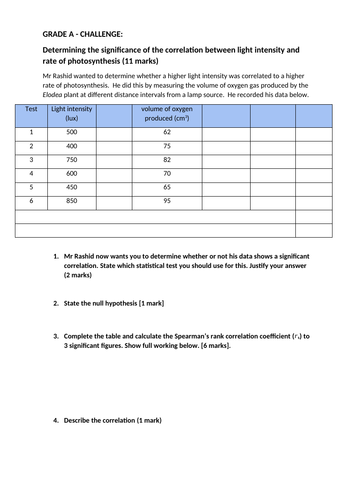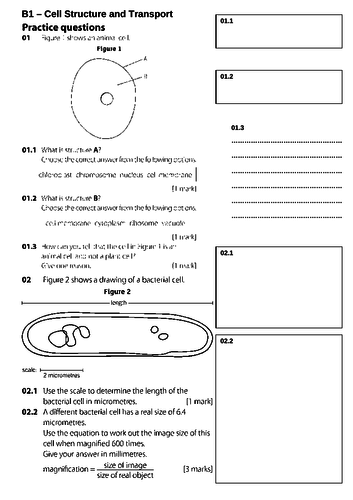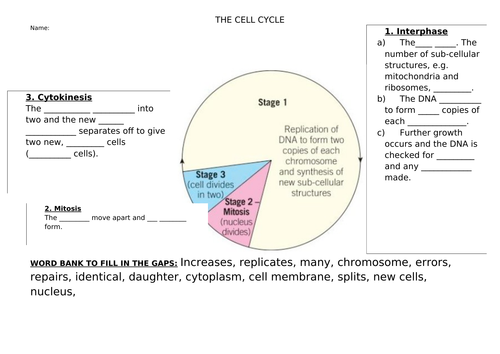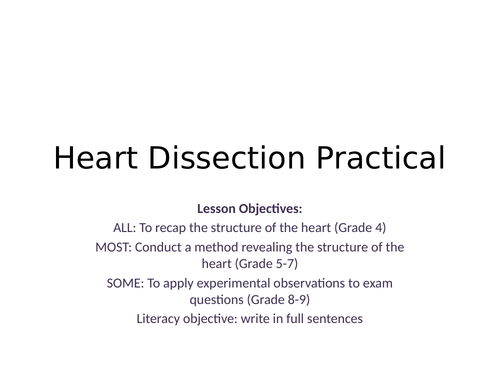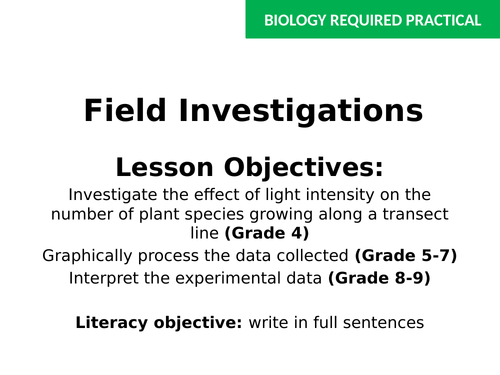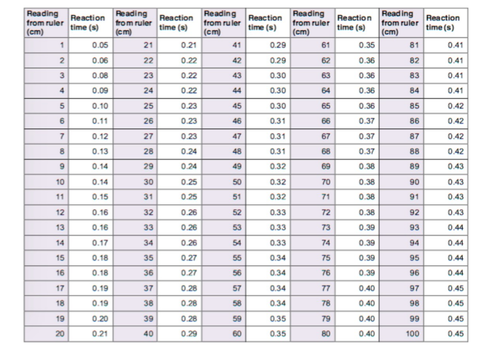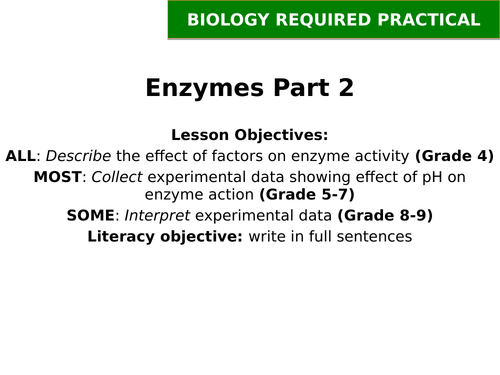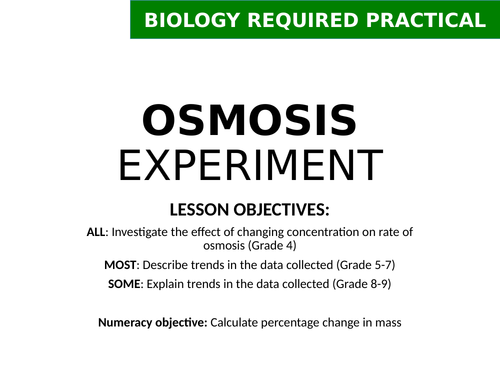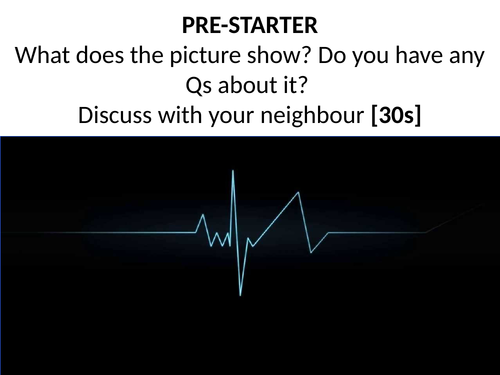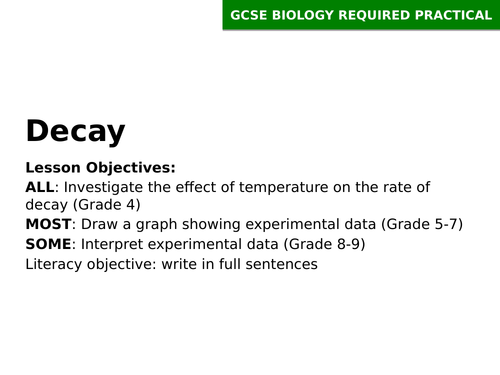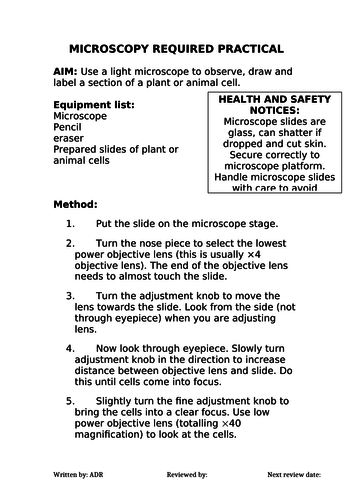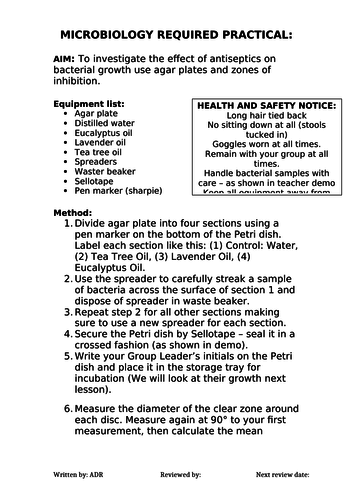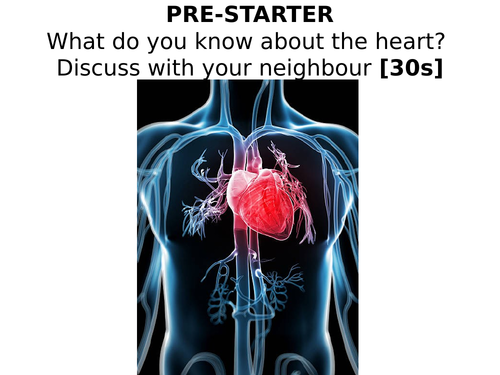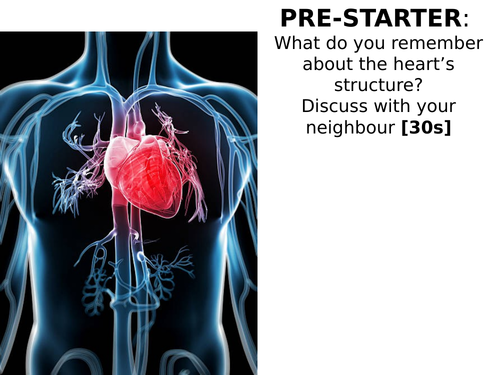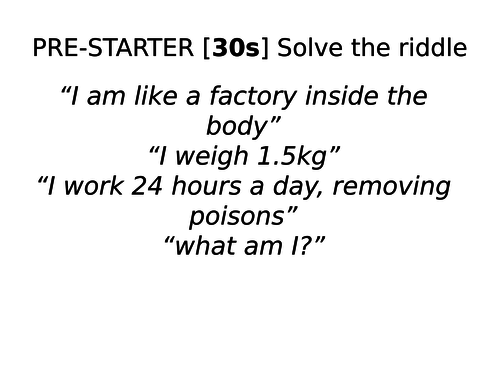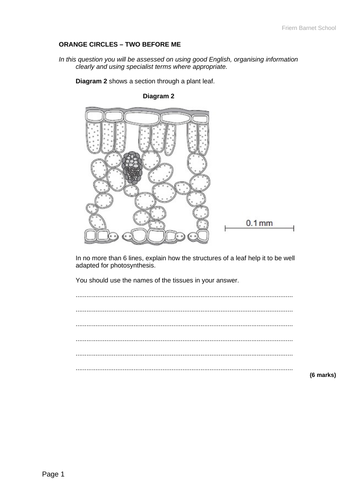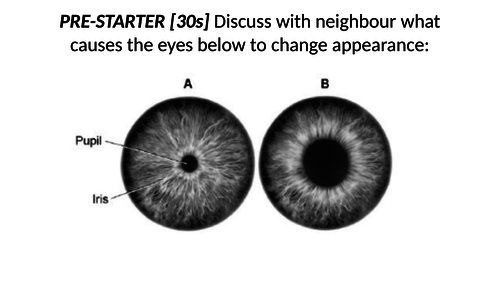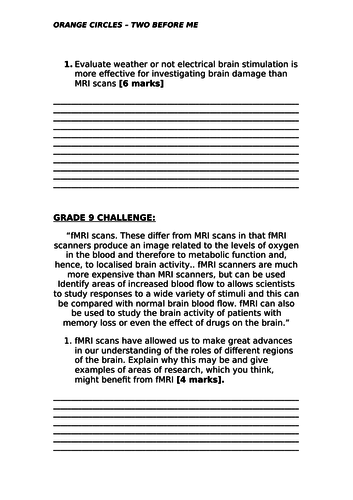172Uploads
30k+Views
2k+Downloads
Biology

OCR A-Level Biology (H420): Chapter 10 - Classification and Evolution - Spearman's Rank (worksheet)
Grade A-A* Challenge Worksheet for Spearman’s Rank calculations. Mark Scheme included.

2018 AQA GCSE Biology Unit 1 (B1): Coronary Heart Disease and Treatment L15
This lesson is for teaching the above named lesson as part of the Organisation module of Biology Unit 1 (B1) of the new 2018 AQA GCSE specifications for Combined Science: Trilogy and GCSE Biology.
The lesson has the following features embedded:
Lesson has Bloom’s Taxonomy embedded throughout which are also graded for differentiation.
Stretch and challenge tasks throughout (including Grade 8-9+ questions and extended writing)
AfL (3 progress checks embedded)
Differentiation is strong as has been noted in all formal school observations for the last 2 years of teaching AQA.
Narrative of lesson structure is clear and focused as well as engaging.
Pre-starter prepared.
The lesson is geared with top-down approach pedagogy and provide inclusive differentiation for low attaining and medium attaining pupils as well.
The lesson should be ‘tweaked’ to meet the needs of your own pupils.

2018 AQA GCSE Biology Unit 1 (B1): Cell Structure and Transport Exam Questions
Cell Structure and Transport Exam Questions Pack. With lots of extended writing style questions as well. Enjoy.

2018 AQA GCSE Biology Unit 1 (B1): Mitosis and the Cell Cycle L4
This lesson is for teaching the above named lesson as part of the Cell Biology module of Biology Unit 1 (B1) of the new 2018 AQA GCSE specifications for Combined Science: Trilogy and GCSE Biology.
The lesson has the following features embedded:
Lesson has Bloom’s Taxonomy embedded throughout which are also graded for differentiation.
Stretch and challenge tasks throughout (including Grade 8-9+ questions and extended writing)
AfL (3 progress checks embedded)
Differentiation is strong as has been noted in all formal school observations for the last 2 years of teaching AQA.
Narrative of lesson structure is clear and focused as well as engaging.
Pre-starter prepared.
The lesson is geared with top-down approach pedagogy and provide inclusive differentiation for low attaining and medium attaining pupils as well.
The lesson should be ‘tweaked’ to meet the needs of your own pupils.

2018 AQA GCSE Biology Unit 1 (B1): Heart Dissection Practical
A fun lesson for dissecting a lamb’s heart. Enjoy.

2018 AQA GCSE Biology Unit 2 (B2): Field Investigations Required Practical
This unique and high-quality pack contains all resources needed to deliver the Field Investigations Required Practical for the new 2018 AQA GCSE Biology and GCSE Combined Science: Trilogy specification.

AQA GCSE Biology Unit 2 (B2): Reaction Time Required Practical
This unique and high-quality pack contains all resources needed to deliver the Reaction Time Required Practical for the new 2018 AQA GCSE Biology and GCSE Combined Science: Trilogy specification.

2018 AQA GCSE Biology Unit 2 (B2): Kidneys and Kidney Dialysis
This lesson is for teaching the above named lesson as part of the Homeostasis and Response Module of Biology Unit 2 (B2) of the new 2018 AQA GCSE specification for GCSE Biology. This pack contains two lessons to deliver content on Kidney function and Kidney disease treatment methods.
The lesson has the following features embedded:
Lesson has Bloom’s Taxonomy embedded throughout which are also graded for differentiation.
Stretch and challenge tasks throughout (including Grade 8-9+ questions and extended writing)
AfL (3 progress checks embedded)
Differentiation is strong as has been noted in formal school observations for the last 2 years of teaching AQA.
Narrative of lesson structure is clear and focused as well as engaging.
Pre-starter prepared.
The lesson is geared with top-down approach pedagogy and provide inclusive differentiation for low attaining and medium attaining pupils as well.
The lesson should be ‘tweaked’ to meet the needs of your own pupils.
NOTE: You can purchase the entire lesson pack for GCSE Biology Unit 2 and Unit 1 (or both units as a whole pack) which contains all Trilogy and Triple Science lessons at a 20% discount. Please look through the resources to find this special ongoing offer.

2018 AQA GCSE Biology Unit 1 (B1): Enzymes Required Practical
This pack contains all resources needed to deliver the Enzymes and pH Required Practical for AQA GCSE Biology and Combined Science: Trilogy for the new 2018 AQA GCSE science specifications.

2018 AQA GCSE Biology Unit 1 (B1): Osmosis Required Practical
This pack contains all resources needed to deliver the Osmosis Required Practical for AQA GCSE Biology and Combined Science: Trilogy for the new 2018 AQA GCSE science specifications.

2018 AQA GCSE Biology Unit 1 (B1): Pacemakers L12
This lesson is for teaching the above named lesson as part of the Organisation module of Biology Unit 1 (B1) of the new 2018 AQA GCSE specifications for Combined Science: Trilogy and GCSE Biology.
The lesson has the following features embedded:
Lesson has Bloom’s Taxonomy embedded throughout which are also graded for differentiation.
Stretch and challenge tasks throughout (including Grade 8-9+ questions and extended writing)
AfL (3 progress checks embedded)
Differentiation is strong as has been noted in all formal school observations for the last 2 years of teaching AQA.
Narrative of lesson structure is clear and focused as well as engaging.
Pre-starter prepared.
The lesson is geared with top-down approach pedagogy and provide inclusive differentiation for low attaining and medium attaining pupils as well.
The lesson should be ‘tweaked’ to meet the needs of your own pupils.

2018 AQA GCSE Biology Unit 2 (B2): Decay Required Practical
This unique and high-quality pack contains all resources needed to deliver the Decay Required Practical for the new 2018 AQA GCSE Biology and GCSE Combined Science: Trilogy specification.

2018 AQA GCSE Biology Unit 1 (B1): Microscopy Required Practical
This pack contains all resources needed to deliver the Microscopy Required Practical for AQA GCSE Biology and Combined Science: Trilogy for the new 2018 AQA GCSE science specifications.

2018 AQA GCSE Biology Unit 1 (B1): Microbiology Required Practical
This pack contains all resources needed to deliver the Microbiology Required Practical for the new 2018 AQA GCSE Biology specification.

2018 AQA GCSE Biology Unit 1 (B1): Heart Structure and Function L11
This lesson is for teaching the above named lesson as part of the Organisation module of Biology Unit 1 (B1) of the new 2018 AQA GCSE specifications for Combined Science: Trilogy and GCSE Biology.
The lesson has the following features embedded:
Lesson has Bloom’s Taxonomy embedded throughout which are also graded for differentiation.
Stretch and challenge tasks throughout (including Grade 8-9+ questions and extended writing)
AfL (3 progress checks embedded)
Differentiation is strong as has been noted in all formal school observations for the last 2 years of teaching AQA.
Narrative of lesson structure is clear and focused as well as engaging.
Pre-starter prepared.
The lesson is geared with top-down approach pedagogy and provide inclusive differentiation for low attaining and medium attaining pupils as well.
The lesson should be ‘tweaked’ to meet the needs of your own pupils.

2018 AQA GCSE Biology Unit 1 (B1): Lung Structure and Function
This lesson is for teaching the above named lesson as part of the Organisation module of Biology Unit 1 (B1) of the new 2018 AQA GCSE specifications for Combined Science: Trilogy and GCSE Biology.
The lesson has the following features embedded:
Lesson has Bloom’s Taxonomy embedded throughout which are also graded for differentiation.
Stretch and challenge tasks throughout (including Grade 8-9+ questions and extended writing)
AfL (3 progress checks embedded)
Differentiation is strong as has been noted in all formal school observations for the last 2 years of teaching AQA.
Narrative of lesson structure is clear and focused as well as engaging.
Pre-starter prepared.
The lesson is geared with top-down approach pedagogy and provide inclusive differentiation for low attaining and medium attaining pupils as well.
The lesson should be ‘tweaked’ to meet the needs of your own pupils.

2018 AQA GCSE Biology Unit 1 (B1): Metabolism and the Liver L32
This lesson is for teaching the above named lesson as part of the Bioenergetics module of Biology Unit 1 (B1) of the new 2018 AQA GCSE specifications for Combined Science: Trilogy and GCSE Biology.
The lesson has the following features embedded:
Lesson has Bloom’s Taxonomy embedded throughout which are also graded for differentiation.
Stretch and challenge tasks throughout (including Grade 8-9+ questions and extended writing)
AfL (3 progress checks embedded)
Differentiation is strong as has been noted in formal school observations for the last 2 years of teaching AQA.
Narrative of lesson structure is clear and focused as well as engaging.
Pre-starter prepared.
The lesson is geared with top-down approach pedagogy and provide inclusive differentiation for low attaining and medium attaining pupils as well.
The lesson should be ‘tweaked’ to meet the needs of your own pupils.

2018 AQA GCSE Biology Unit 1 (B1): Transport in Plants Part 1 L18
This lesson is for teaching the above named lesson as part of the Organisation module of Biology Unit 1 (B1) of the new 2018 AQA GCSE specifications for Combined Science: Trilogy and GCSE Biology.
The lesson has the following features embedded:
Lesson has Bloom’s Taxonomy embedded throughout which are also graded for differentiation.
Stretch and challenge tasks throughout (including Grade 8-9+ questions and extended writing)
AfL (3 progress checks embedded)
Differentiation is strong as has been noted in all formal school observations for the last 2 years of teaching AQA.
Narrative of lesson structure is clear and focused as well as engaging.
Pre-starter prepared.
The lesson is geared with top-down approach pedagogy and provide inclusive differentiation for low attaining and medium attaining pupils as well.
The lesson should be ‘tweaked’ to meet the needs of your own pupils.

2018 AQA GCSE Biology Unit 2 (B2): Eye Biology L5
This lesson is for teaching the above named lesson as part of the Homeostasis and Response module of Biology Unit 2 (B2) of the new 2018 AQA GCSE specification for GCSE Biology.
The lesson has the following features embedded:
Lesson has Bloom’s Taxonomy embedded throughout which are also graded for differentiation.
Stretch and challenge tasks throughout (including Grade 8-9+ questions and extended writing)
AfL (3 progress checks embedded)
Differentiation is strong as has been noted in formal school observations for the last 2 years of teaching AQA.
Narrative of lesson structure is clear and focused as well as engaging.
Pre-starter prepared.
The lesson is geared with top-down approach pedagogy and provide inclusive differentiation for low attaining and medium attaining pupils as well.
The lesson should be ‘tweaked’ to meet the needs of your own pupils.

2018 AQA GCSE Biology Unit 2 (B2): Brain Biology L4
This lesson is for teaching the above named lesson as part of the Homeostasis and Response module of Biology Unit 2 (B2) of the new 2018 AQA GCSE specification for GCSE Biology.
The lesson has the following features embedded:
Lesson has Bloom’s Taxonomy embedded throughout which are also graded for differentiation.
Stretch and challenge tasks throughout (including Grade 8-9+ questions and extended writing)
AfL (3 progress checks embedded)
Differentiation is strong as has been noted in formal school observations for the last 2 years of teaching AQA.
Narrative of lesson structure is clear and focused as well as engaging.
Pre-starter prepared.
The lesson is geared with top-down approach pedagogy and provide inclusive differentiation for low attaining and medium attaining pupils as well.
The lesson should be ‘tweaked’ to meet the needs of your own pupils.

